Q
What Are The Configurations of Proton Saga? Here's The Full Specifications!
The Proton Saga is powered by a 1.3L inline 4-cylinder 16-valve DOHC engine (with VVT technology). It has a maximum power of 95PS and a maximum torque of 120N・m, and is paired with a 5-speed manual or 4-speed automatic transmission. There are four versions available: Standard MT, Standard AT, Premium AT, and Premium S AT.
The vehicle's body dimensions are 4335mm in length, 1690mm in width, and 1515mm in height, with a wheelbase of 2465mm. The curb weight ranges from 1065 to 1089kg, the fuel tank capacity is 40L, and the official fuel consumption is 6.7L per 100km. It comes standard with ABS + EBD. Automatic transmission models are additionally equipped with ESC, TCS, and HHA.
Different versions vary in terms of wheel specifications (14 - 15 inches), lighting configurations (halogen / LED daytime running lights), and comfort features (keyless entry, multi-functional steering wheel). The entire series comes with a 5-year/150,000-kilometer warranty.
Special Disclaimer: This content is published by users and does not represent the views or position of PCauto.
Related Q&A
Q
How much does it cost to maintain a Proton Saga 2022?
Based on Proton Saga 2022's official maintenance guidelines and real-world conditions in the Malaysian market, the annual upkeep costs for this car typically range from RM800 to RM1,200, though this figure can vary significantly depending on your annual mileage and the specific services required. Of course, this depends heavily on your mileage and the specific services you opt for. For regular servicing – think oil changes, oil filter replacements, and the basics – you're looking at around RM200 to RM300 per session. When it comes time for a major service, which might involve changing brake fluid, transmission oil, and other key components, expect to shell out between RM500 and RM800.
Being a homegrown Malaysian brand, Proton Saga benefits from relatively affordable零部件 prices and an extensive network of service centers, which definitely helps keep long-term ownership costs in check. Sticking to regular maintenance isn't just about prolonging your car's lifespan; it's crucial for keeping you safe on the road too. We always recommend following the maintenance manual to the letter and choosing authorized Proton service centers – that way, you're guaranteed genuine parts and professional expertise under the hood. And if you're watching your wallet, keep an eye out for Proton's occasional service promotions; they can help you trim those costs even further.
Q
What is the warranty on the 2022 Proton Saga?
The 2022 Proton Saga comes with a solid 5-year or 150,000 km factory warranty (whichever comes first), covering key components like the engine and transmission. The anti-rust warranty stretches to 7 years with unlimited mileage. This warranty package is pretty competitive in Malaysia's compact car segment and should help keep long-term ownership costs in check for drivers.
Important to note though – to keep that warranty valid, you've gotta stick to regular servicing at authorized Proton service centers. Skipping that could void your coverage, so make sure you hold onto all those service records, folks. On top of that, Proton throws in 24-hour roadside assistance for extra peace of mind when you're out and about.
Malaysia's hot and rainy weather can really test a car's durability, so going for a model with a lengthy warranty just makes smart sense. Other local players like Perodua also offer similar long-haul warranty deals, so it's worth shopping around before making your final decision.
Q
What is the resale value of a Proton Saga?
The Proton Saga, one of Malaysia's most beloved budget-friendly sedans, sees its used car value fluctuate pretty noticeably based on the model year, mileage, condition, and market demand. Industry data shows that a 3-year-old Saga typically retains around 50-60% of its original price, and even at 5 years old, it's still holding steady at roughly 40%. That actually outperforms some competitors in its class, thanks to its low maintenance costs, widespread after-sales network, and solid market reputation.
Something to keep in mind: top-spec trims like the Premium S, with their extra features, usually hold 5-8% more value than the base models. And a Saga with a complete, regular service history? That can fetch a 10% premium when you resell. If you're looking to boost your car's resale value, it's smart to hang onto those service records from when it was under the factory warranty and steer clear of major modifications that mess with the original specs.
Also, the Saga's 1.3L engine paired with that tried-and-tested gearbox delivers reliable fuel efficiency – a big checkmark for used car buyers. Malaysia's second-hand car market keeps steady demand for practical, economical rides like the Saga, especially among first-time car owners. So, price it right, and your used Saga should move pretty quick.
Q
Is the 2022 Proton Saga a good first car?
The 2022 Proton Saga makes total sense as a first car. It's got a solid rep in Malaysia for being a great value workhorse – easy on the wallet to buy, even easier to keep running, which is perfect if you're a first-time buyer watching your budget. Under the hood, you've got a 1.3L naturally aspirated engine. Now, it's no rocket ship, but trust me, it's more than enough for zipping around town on your daily commute.
Space-wise, for a small sedan, it's surprisingly roomy. You can squeeze five adults in there without too much hassle, and the boot? A decent 420 liters – plenty for family errands or a weekend getaway. Safety kit? It's got the basics covered: ABS, EBD, and dual airbags. Nothing flashy, but exactly what you'd expect in this price bracket.
One thing that really works for the Saga is Proton's service network. They're all over the country, so getting it serviced or fixed is a breeze. Parts are easy to come by and won't break the bank, which is a big plus when you're just starting out.
Driving it? Super laid-back. The steering is light, the size is just right – not too big, not too small – so navigating tight city streets and squeezing into parking spots is a cinch, even for new drivers. I also dig that they've kept the traditional physical buttons. No messing around with finicky touchscreens for every little thing; you just reach out and press – simple and intuitive. That's a big win for folks who value functionality over fancy tech.
Now, if you're all about the latest gadgets, you might wanna look at something more upmarket. But as an entry-level family car, the 2022 Saga is a really down-to-earth choice. And hey, let's not forget Malaysia's weather – hot and humid with those monsoon downpours. Proton's tweaked the air-con to blow nice and cold, and the body's rust-proofed to handle the elements. It's like they built it specifically for our local conditions. Can't argue with that.
Q
Does the 2022 Proton Saga have push-to-start?
The 2022 Proton Saga doesn't come with push-to-start ignition; this entry-level sedan sticks with the traditional keyed system. The focus here is on practical features instead, like the standard 7-inch touchscreen, Bluetooth connectivity, and reverse camera. For Malaysian buyers, push-to-start is usually reserved for higher-spec models or B-segment and above – you'll find it on the Proton X50 or X70, for example, where it adds that extra layer of convenience.
Sure, it misses out on keyless entry, but the Saga still holds its ground as one of the country's best-selling national cars thanks to its wallet-friendly price tag, impressive fuel economy (5.6L/100km), and Proton's solid after-sales network. If push-to-start is a must-have for you, third-party kits are available, but keep in mind this might affect your factory warranty. Your safest bet? Go through a Proton authorized service center for the retrofit.
Truth be told, in Malaysia's hot and humid climate, a good old mechanical key can be more reliable. That's probably why plenty of budget-friendly cars still stick with this tried-and-tested setup.
Q
How does the 2022 Proton Saga compare to the Perodua Bezza?
Malaysia's favorite B-segment sedans for 2022, the Proton Saga and Perodua Bezza, each bring their own strengths to the table. The Saga packs a 1.3L four-cylinder engine churning out 95PS, paired with a 4AT gearbox. It delivers smooth power delivery and a comfort-tuned chassis, making it a solid family hauler. ABS and dual airbags come standard across the range, with the higher trims adding stability control. The interior leans into practicality, and space-wise, it has the Bezza beat.
On the flip side, the Bezza offers a choice of 1.0L and 1.3L engines. ISOFIX child seat anchors are standard across all variants, and the top-spec model gets the ASA 3.0 driver assistance suite, giving it an edge in tech. However, rear passenger space can feel a bit tight.
Both models tick the boxes for Malaysian buyers looking for economy and practicality. The Saga wins on value-for-money and interior room, while the Bezza shines brighter when it comes to fuel efficiency and active safety tech. It's worth noting both have scored a 4-star ASEAN NCAP safety rating, so you're covered on that front. Ultimately, the choice boils down to your priorities and budget. If you want a bit more engagement behind the wheel, take the Saga for a spin. But if low running costs are your main focus, the Bezza is the way to go.
Q
Is the 2022 Proton Saga comfortable for long drives?
The 2022 Proton Saga, as the entry-level sedan from Malaysia's homegrown brand, delivers a solid but unremarkable performance when it comes to long-distance driving comfort. The seats, featuring ergonomic design with decent lumbar support, handle those typical 4-5 hour interstate drives around Malaysia just fine. However, the rather firm suspension setup does take a slight toll on comfort when tackling bumpy roads. In terms of noise insulation, tire roar becomes noticeable once you exceed 110km/h, but it's still within the acceptable range for its class. For buyers who frequently hit the highway, I'd recommend springing for the higher-spec leather seat variant to up the comfort ante. Also, regular wheel alignments and tire maintenance can really help cut down on long-drive fatigue. If you're dead set on a better long-distance experience within a similar price bracket, you might want to stretch your budget for a B-segment sedan. That said, the Saga still holds its own with strong fuel efficiency and low maintenance costs – its official 5.6L/100km fuel consumption figure is definitely a draw for folks regularly cruising the North-South Expressway.
Q
Does the 2022 Proton Saga support Apple CarPlay and Android Auto?
The 2022 Proton Saga, a key entry-level model from Malaysia's national car brand, does come with a 7-inch touchscreen infotainment system supporting Apple CarPlay and Android Auto in its 1.3L Premium variant. This feature uses a wired USB connection for smartphone mirroring, allowing drivers to safely access common apps like navigation and music on the go. It's worth noting that the base 1.3L Standard trim misses out on this – something shoppers should keep in mind when balancing budget and needs.
Given Malaysia's hot and rainy climate, the Saga's infotainment screen holds up well against glare, and the system's responsiveness has been tuned for local road conditions. A quick tip though: regular cleaning of the USB port is a good idea to prevent connection issues down the line.
Looking at rivals, the 2022 Perodua Bezza only offered similar phone connectivity in its higher-spec trims. Meanwhile, Proton's decision to make reverse camera standard across the Saga range really highlights the brand's focus on practicality. These little differences are definitely worth considering when shopping for an affordable sedan in Malaysia.
Q
What is the horsepower of the 2022 Proton Saga?
Powering the 2022 Proton Saga is a 1.3-liter naturally aspirated four-cylinder engine, cranking out 95 PS and 120 Nm of torque. It pairs with either a 5-speed manual or 4-speed automatic gearbox. As the Malaysian brand's entry-level sedan, this car has won over plenty of family buyers with its wallet-friendly price tag and solid reliability. The horsepower figure might not blow you away, but it's more than enough for daily city drives. Plus, it's pretty fuel-efficient too – perfect if you're watching your budget.
Horsepower is definitely a key metric for engine performance, but real-world driving feel depends on a mix of factors: torque delivery, how well the gearbox works with the engine, and the car's weight. The Saga's tune leans into smoothness and fuel economy, which makes total sense for its position in the market. Even with Malaysia's hilly roads and hot weather, this small-displacement engine holds its own, providing enough oomph when you need it. And let's not forget the low maintenance costs – that's another big reason it stays a hit locally.
Q
What are the safety features in the 2022 Proton Saga?
The 2022 Proton Saga, Malaysia's beloved national car, doesn't skimp on safety, boasting an ASEAN NCAP 4-star rating. Across the range, you're getting dual airbags, ABS with EBD and BA as standard – the essentials you'd expect. Step up to the higher-spec variants, and you'll unlock the added reassurance of ESC (Electronic Stability Control) and TCS (Traction Control System), which do a solid job of keeping things composed when the roads get slippery.
Proton has built the Saga with a high-tensile steel body structure, and they've thrown in ISOFIX child seat anchors too, so it's got both passive safety and family practicality covered. It's worth noting the Saga uses a front-disc, rear-drum brake setup, but paired with some tire grip optimization, it delivers a well-rounded performance for a B-segment sedan.
If your budget stretches that far, I'd definitely recommend going for the version with ESC. It's a game-changer when it comes to reducing skidding risks, and let's be real, that's a big plus in Malaysia's often rainy weather. Competitors like the Perodua Bezza offer similar safety kit these days, so it really comes down to comparing specs and figuring out what best suits your needs.
Latest Q&A
Q
How to reset the tire pressure sensor in Honda Civic?
To reset the TPMS on your Honda Civic, start by turning the ignition to the "on" position without starting the engine. Then, locate the "TPMS" button on the dashboard or navigate to the vehicle settings menu via the infotainment screen. Select the "Tire Pressure Calibration" option and follow the prompts to complete the reset. Afterward, drive normally for about 10 minutes to let the system automatically learn the new tire pressure data.
It's worth noting that the process can vary slightly between Civic model years. Newer models might offer touchscreen controls, while older ones may require using the steering wheel buttons to cycle through menus. For Malaysian owners, given the hot climate, it's a good idea to check your tire pressure—including the spare—once a month. High temperatures can cause pressure to rise, and improper tire pressure doesn't just hurt fuel economy and handling; it can also speed up tire wear.
If the TPMS light stays on after resetting, the sensor battery might be dead or you could have a slow leak. In that case, it's best to head to a professional workshop for further diagnosis. Also, TPMS sensor batteries typically last 5-7 years, and when replacing them, sticking with OEM parts is recommended to ensure compatibility.
Q
How much is a Honda Civic 2024
The 2024 Honda Civic's pricing in Malaysia varies depending on the trim level and specs, typically ranging from around RM130,000 to RM160,000. For the most up-to-date figures and any ongoing promotions, your best bet is to hit up your local authorized Honda dealer.
As a Honda staple, the Civic has long been a favorite among Malaysian drivers, thanks to its solid reliability, sleek looks, and tech-forward features. The 2024 model steps things up even more in the safety and driver assistance department—expect it to come equipped with the Honda Sensing suite, which includes handy features like adaptive cruise control and lane-keeping assist.
Another big plus for the Civic in Malaysia? Its fuel efficiency and wallet-friendly maintenance costs. If you're in the market for a compact sedan, this one's definitely worth a spot on your shortlist. Of course, it's not without competition—rivals like the Toyota Corolla and Mazda 3 are also vying for attention. At the end of the day, it all comes down to your personal taste and budget, so take the time to compare them side by side.
Q
Which tyre brand is the best for Honda Civic?
When it comes to picking the right tires for your Honda Civic in Malaysia, you’ve got to factor in our local road conditions, climate, and your driving style. The Michelin Pilot Sport 4 or Primacy 4 lines are solid go-tos—they strike a nice balance between dry and wet grip, durability, and noise levels, matching the Civic’s sporty character pretty well. If comfort and long mileage are your top priorities, especially for those frequent highway runs, the Bridgestone Turanza T005A leans more that way. On a tighter budget? The Continental UC6 or Goodyear Assurance TripleMax 2 still deliver reliable daily driving performance with better value for money.
Since Malaysia gets a fair amount of rain, prioritizing tires with high wet performance ratings (like an A rating on the EU label) is smart. Also, make sure the size matches your factory specs—common ones are 215/50 R17 or 225/45 R18. Keeping an eye on tire pressure (around 230-240 kPa) and checking tread wear regularly will help them last longer. If you often hit rough roads, consider models with reinforced sidewalls, though they might nudge fuel consumption up a tiny bit.
Q
How to update the satellite navigation system of Honda Civic ?
To update the satellite navigation system in your Honda Civic, first you need to confirm your car's model year and navigation system version, since different model years might use different update methods. For newer Honda Civics, you can get the latest navigation map update package from the official Honda Malaysia website or an authorized dealership. Usually, you'll need to download it to a USB drive and then plug that into your car's USB port to install. If you have an older model, you might have to head to a dealership where they can do the update using special equipment. It's a good idea to back up your existing data before updating and make sure your car battery is fully charged to avoid any interruptions. Also, updating your navigation system regularly not only gets you the latest road info but also boosts system performance—like faster route calculations and more accurate real-time traffic data. If you're not sure how to do the update yourself, it's best to contact Honda Malaysia's customer service or book an appointment with a dealership to help out, so the update goes smoothly. In the meantime, you could also use smartphone navigation apps like Waze or Google Maps as a temporary alternative—they usually offer real-time updates and more features anyway.
Q
What engine does a 2015 Honda Civic have?
The 2015 Honda Civic in Malaysia came with two engine options: a 1.8-liter SOHC i-VTEC four-cylinder naturally aspirated unit and a 2.0-liter SOHC i-VTEC four-cylinder naturally aspirated engine. The 1.8L puts out 141 horsepower and 174 Nm of torque, while the 2.0L ups the ante to 155 hp and 190 Nm. Both are paired with a 5-speed automatic transmission, delivering smooth driving dynamics and solid fuel efficiency.
What really stands out is Honda's i-VTEC tech – it smartly adjusts valve timing and lift to optimize performance and efficiency across different engine speeds, making it perfect for Malaysia's mix of city commutes and highway runs. The 2015 Civic also built a strong reputation locally for being durable and easy on maintenance costs. Honda clearly thought about our tropical climate too – the engine's cooling system and electronics are tweaked to handle the heat and humidity, ensuring reliable operation even when things get sweltering.
For Malaysian buyers, the 2015 Civic's engines offer more than enough power for daily driving, and their long-term running costs are pretty reasonable. No wonder it's still a hot pick in the used car market.
View MoreRelated News

Proton's fourth-generation Saga revolution, brand new 1.5L four-cylinder engine, equipped with ADAS for the first time
MichaelSep 9, 2025
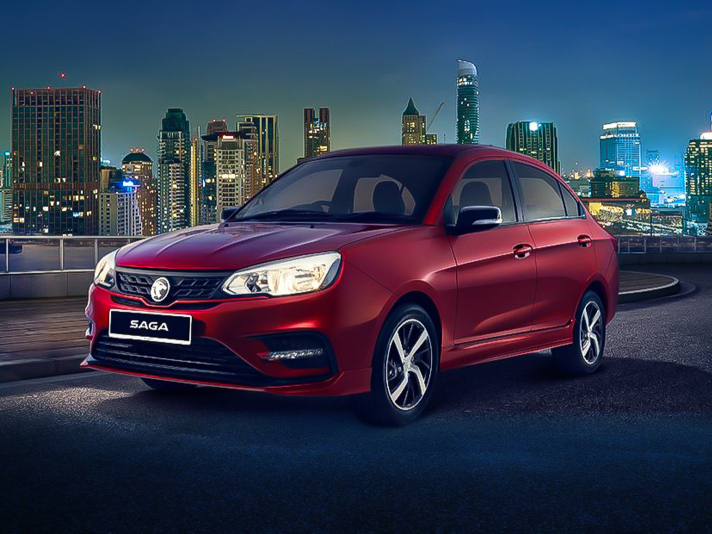
Proton Saga Interior Review: Affordable Yet Stylish for Everyday Use
WilliamJul 17, 2025
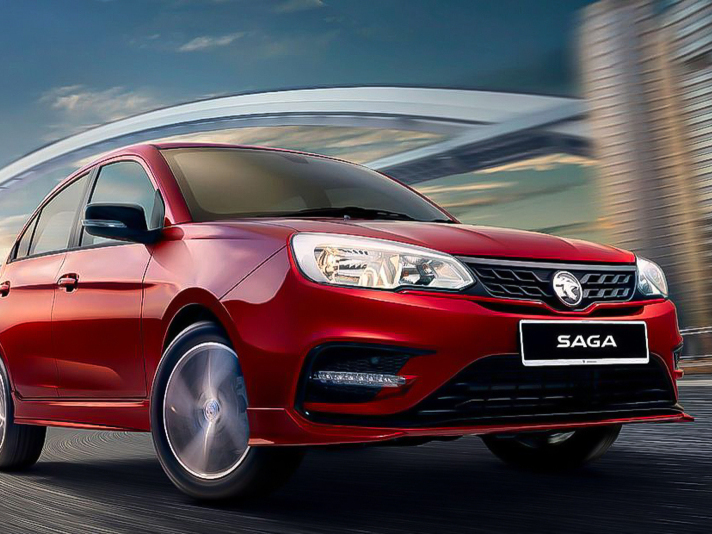
2025 Halfway Mark: All-New Proton Saga Coming Soon!
JohnMay 30, 2025
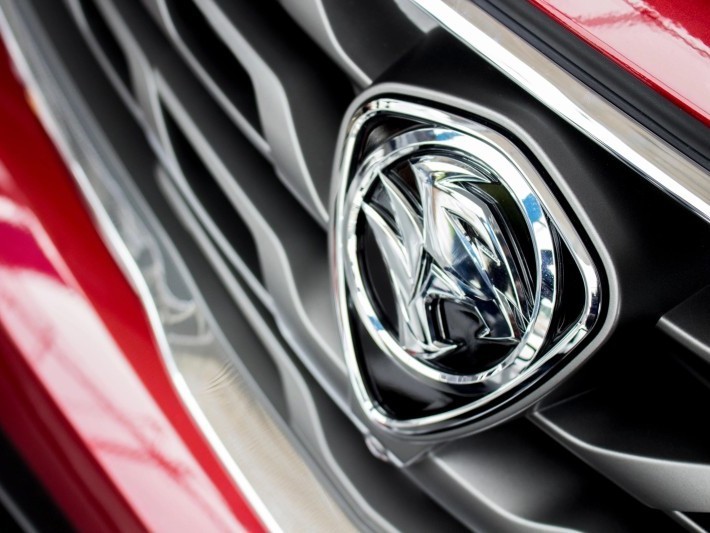
Proton Recorded Sales of 13,918 Vehicles in March, Marking a Significant MOM Increase of 23.9%
AshleyApr 10, 2025
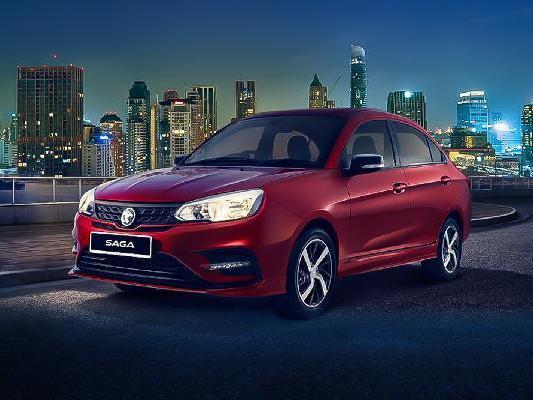
Proton Saga: A Clear Overview of Configurations and Costs of models
LienMar 25, 2025
View More












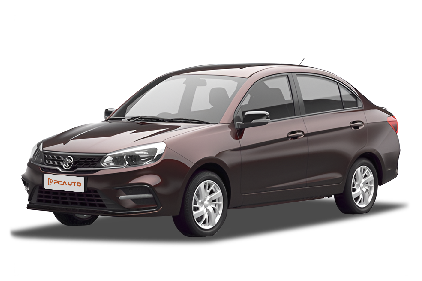




Pros
Cons